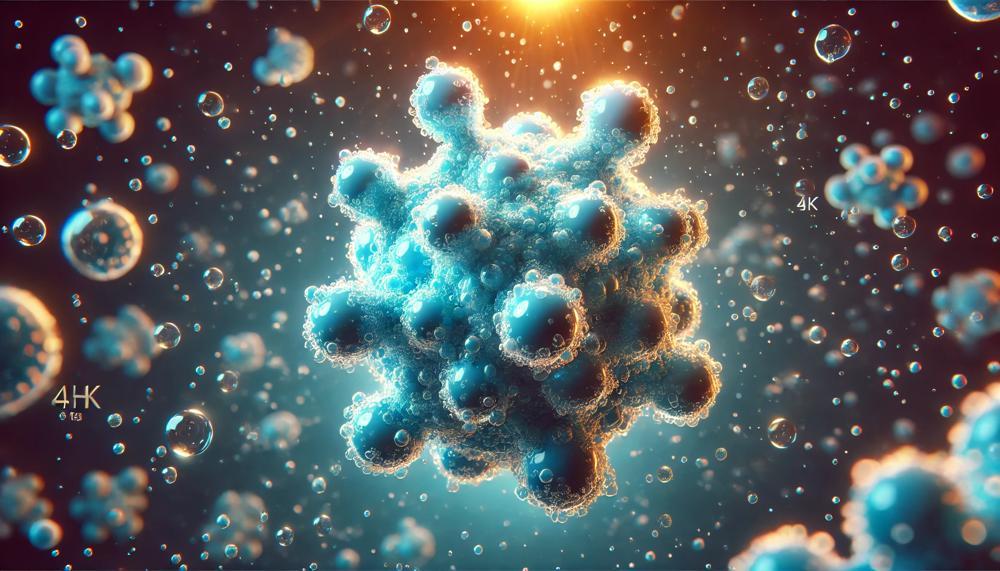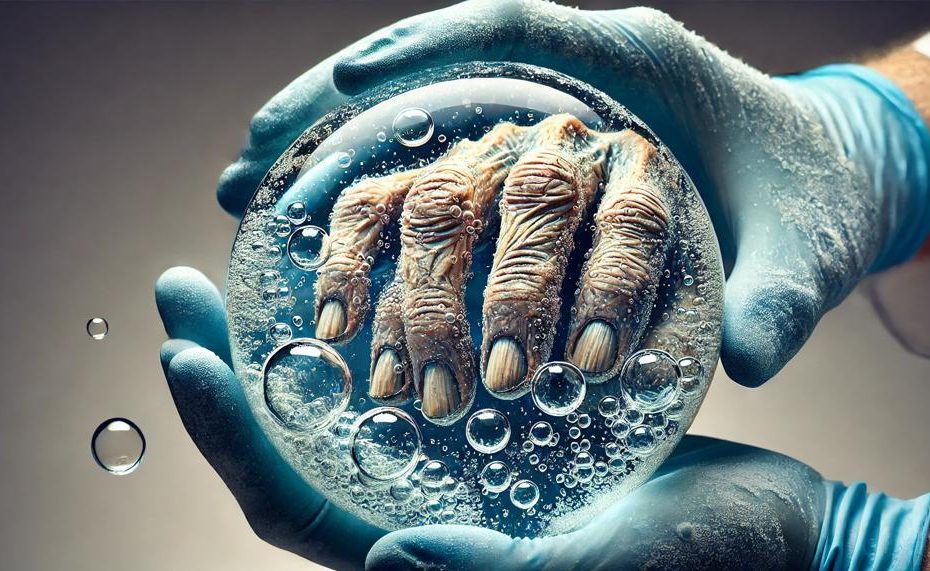Yes, but with specific precautions. Hydrogen peroxide, a common household item, can pose significant risks if not disposed of properly.
Whether you’ve got a dusty old bottle that’s past its prime or a surplus from a science experiment, understanding how to safely get rid of it is crucial for both your safety and the environment.
Why Proper Disposal Matters
Hydrogen peroxide is more than just a first-aid kit staple; it’s a potent chemical that can be hazardous. Here’s why you should handle its disposal with care:
- Environmental Safety: Pouring it down the drain can harm aquatic life and disrupt water treatment processes.
- Household Safety: Improper storage or disposal can lead to accidents, including fires or chemical reactions.
- Legal Compliance: There are regulations governing the disposal of hazardous substances to protect public health and the environment.
Key Takeaways for Safe Disposal
- Donate Unused Supplies: If you have extra hydrogen peroxide, consider donating it to local labs or schools.
- Check Shelf Life: Closed bottles last 2 to 3 years. Dispose of any that are visibly dusty or ineffective.
- Avoid Drains: Never pour hydrogen peroxide down the sink to prevent environmental harm.
- Safe Storage: Keep it away from flammable objects, organic materials, acids, alkalis, and oxidizing agents.
- Protect from Sunlight: Store it in a cool, dark place to prevent degradation and potential hazards.
- Consult Authorities: Contact state, federal, and local environmental agencies for specific disposal guidelines.
By following these tips, you can ensure the safe and responsible disposal of hydrogen peroxide, protecting both your home and the environment.
Contents
Is Hydrogen Peroxide Toxic?
To dispose of hydrogen peroxide safely and without harming yourself or the environment, follow these methods:
Neutralization Method
- Add a reducing agent like sodium sulfite or sodium bisulfite to neutralize the hydrogen peroxide. These agents convert hydrogen peroxide into harmless water and oxygen gas. Use caution as this reaction can be exothermic.
- After neutralization, the solution can be safely poured down the drain with plenty of water.
Hazardous Waste Facility
- Take hydrogen peroxide to a local hazardous waste disposal facility. These facilities are equipped to handle and dispose of hazardous chemicals safely. Contact your local municipality for information on available services and guidelines.
Hazardous Waste Disposal Company
- If there are no local facilities, hire a hazardous waste disposal company. These companies have the expertise and equipment to safely dispose of hydrogen peroxide and other hazardous chemicals.
Donation
- Donate any extra hydrogen peroxide to local labs, schools, or chemical retailers who can use it or dispose of it properly.
Precautions for Safe Handling and Disposal
- Wear Protective Gear: Use gloves and eye protection to avoid skin and eye irritation.
- Avoid Inhalation: Work in a well-ventilated area to prevent inhaling fumes.
- Store Properly: Keep hydrogen peroxide in a cool, dark place away from organic materials, acids, alkalis, and oxidizing agents.
- Check for Local Regulations: Always refer to local, state, and federal guidelines for specific disposal methods and regulations.

Environmental Impact
- Avoid Drain Disposal: Diluting and pouring hydrogen peroxide directly down the drain can lead to environmental harm, such as algal blooms in water bodies.
- Proper Neutralization: Ensures that hydrogen peroxide is broken down into non-harmful components before disposal.
Negative Effect Of Hydrogen Peroxide
The potential negative effects of improperly disposing of hydrogen peroxide include both health and environmental risks.
Improper disposal can lead to a series of adverse outcomes:
Health Risks:
- Skin and Eye Irritation: Direct contact with hydrogen peroxide, especially in higher concentrations, can cause significant irritation and burns to the skin and eyes.
- Respiratory Issues: Inhaling the vapours of hydrogen peroxide can lead to respiratory problems, including irritation of the nose, throat, and lungs.
Environmental Impact:
- Water Contamination: When hydrogen peroxide is poured down drains without proper dilution, it can enter the water system and contaminate local water sources. This can be harmful to aquatic life and disrupt ecosystems.
- Soil Contamination: Spillage or improper disposal on land can lead to soil contamination, affecting plant life and potentially entering the food chain.
- Air Pollution: Improper handling can release vapours into the air, contributing to air pollution and posing inhalation risks to nearby humans and animals.
Safe Disposal Methods:
To mitigate these risks, it is essential to follow safe disposal practices:
- Dilution: Dilute hydrogen peroxide with water until it is less than 3% concentration before pouring it down the drain.
- Hazardous Waste Facilities: For larger amounts or higher concentrations, contact a hazardous waste disposal facility.
- Neutralization: Neutralize the chemical with sodium sulfite before disposal.
- Protective Gear: Always wear protective gloves and goggles when handling hydrogen peroxide.
Can You Drain Down Hydrogen Peroxide?
No, it is not safe to dispose of hydrogen peroxide by pouring it down the drain.
Hydrogen peroxide is a reactive chemical that can mix with other substances in the sewage system, potentially creating hazardous byproducts. These byproducts can harm the environment and public health. Additionally, hydrogen peroxide can damage plumbing and septic systems by corroding pipes and disrupting the balance of bacteria in septic tanks.
| Risk | Details | Mitigation |
| Environmental Harm | Reacts with other substances in the sewage system, creating hazardous byproducts. | Avoid pouring it down the drain; use proper disposal methods. |
| Plumbing Damage | Corrodes pipes and can cause blockages. | Prevent by not pouring hydrogen peroxide down the drain. |
| Septic System Disruption | Disrupts bacterial balance, affecting waste breakdown. | Use alternative disposal methods. |
How To Dispose Of Hydrogen Peroxide
To dispose of hydrogen peroxide safely and in an environmentally-friendly manner, follow these steps:
Check the Expiration Date
Examine the bottle for its expiration date. Expired hydrogen peroxide can be unstable and should not be used. Look for the “EXP” date on the label and proceed to dispose of it if it has expired.
Dilute the Hydrogen Peroxide
Dilute the hydrogen peroxide to reduce its concentration. Mix one part hydrogen peroxide with ten parts water (1:10 ratio). This makes it safer to handle.
Neutralize with a Stabilizing Agent
Add a stabilizing agent like sodium bisulfate to the diluted solution. This neutralizes any remaining reactive properties. Sodium bisulfate can be found in pool supply stores. Stir until it fully dissolves.
Dispose of the Neutralized Solution
Follow local guidelines for hazardous waste disposal. Contact your local waste management department to determine the proper disposal method. Typically, this involves taking the neutralized solution to a designated hazardous waste collection center. Do not pour it down the drain or throw it in the trash.
Safety Tips For Disposing of Hydrogen Peroxide
Safely disposing of hydrogen peroxide at home requires careful adherence to several key steps. Here’s a detailed guide:
| Step | Action | Details |
| Check Activity | Add to water | If no bubbles or fizzing, it’s inactive |
| Dilution | Mix with water | 1 part hydrogen peroxide to 10 parts water |
| Natural Cleaning | Combine with baking soda | Use for cleaning surfaces and floors |
| Hazardous Waste | Contact facility | Local hazardous waste disposal |
| Avoid Mixing | Do not mix with chemicals | Prevents toxic gas formation |
| Safe Storage | Store properly | Cool, dark place away from heat |
| Donation | Donate unused hydrogen peroxide | Local labs, schools, or chemical retailers |
| Regulatory Guidance | Follow guidelines | State, federal, and local regulations |
Conclusion
Properly disposing of hydrogen peroxide at home requires diligence and care to protect both personal safety and the environment. This potent chemical, commonly found in households, can pose significant risks if mishandled. Here’s how to ensure you dispose of it responsibly.
First, always consider donating any unused hydrogen peroxide to local schools or labs. This not only prevents waste but also supports educational and scientific endeavors. If the peroxide is old or no longer effective, avoid pouring it down the drain as this can harm aquatic life and disrupt water treatment systems.
A safer method for disposal at home involves neutralization. By adding a reducing agent like sodium sulfite or sodium bisulfite, you can convert hydrogen peroxide into water and oxygen gas. This process can be exothermic, so handle it with care and always wear protective gear.
For those with large quantities or higher concentrations, consider taking it to a local hazardous waste facility. These facilities are equipped to handle such chemicals safely. Alternatively, hiring a certified hazardous waste disposal company ensures professional and safe disposal.
Always store hydrogen peroxide in a cool, dark place away from flammable objects and materials that could cause dangerous reactions.





